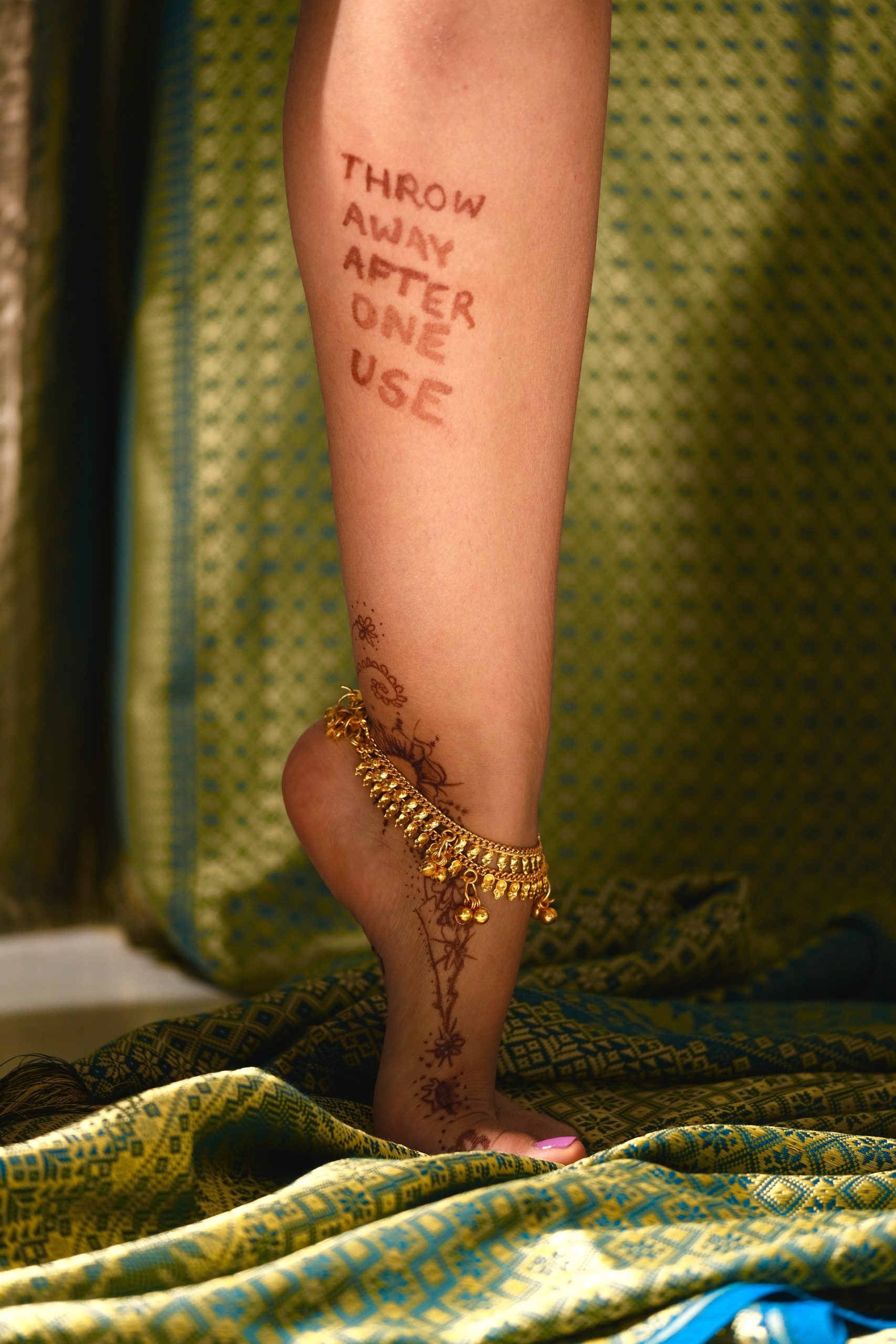



 Share the love —
Share the love —
At a very young age, Malaika Munshi was surrounded by swatches and fabrics of cloth at her mother’s custom-clothing business in India, which the young creative credits as the start of forming her unique artistic expression.
As an artist, Malaika expresses herself through color, texture and makeup and doesn’t like to define herself via one medium, preferring the fluidity of moving from one form of expression to another – be it photography, digital illustrations or painting.
“I have always been inspired to create. I started painting at the age of seven and haven’t stopped since,” she says.
Malaika has a distinct androgynous fashion sense, which she confidently plays within her own way of dressing and when styling others. It only takes a few scrolls through her Instagram feed to understand that she embodies the youthful freedom of expression and of portraying herself in whimsical ways.
She strives to shut down stereotypes around her ethnicity with humor and often draws from her traditional roots for inspiration. “I have been inspired by my own culture because I feel like it is underrepresented in the creative world,” she says. “As a Gujrati woman, I have a lot to express about my culture and the stereotypes around it.”
Fashion was always a big part of her life and growing up in the UAE, Malaika’s sense of style was encouraged and influenced by the surrounding aesthetics.
“My dad used to take me to the discount markets in Sharjah and I would buy loads of cheap makeup and wigs,” she remembers. “This was the most entertaining thing for me. Every single evening I would sit in front of the mirror and transform myself.”
Malaika also believes that fashion is all about having fun and being confident.

In November 2019, Malaika’s work “Plastic Bride” was a part of The Cave Show at Dubai Design Week, showcasing vibrant works from emerging regional creatives through photography, art, sustainable design, and installations.
At first glance, “Plastic Bride” is a beautiful self-portrait of a bride donned in simple traditional jewelry with a veil made of plastic, which you only notice when the curiosity evoked by the image nudges you to look closer at the details.
“I am mad at the expectations of Indian women and the traditional mindset behind it,” says Malaika, who makes this sentiment clear through this particular portrait.
“It is about how a bride is layered with so much hair and makeup on her wedding day to resemble a perfect plastic doll in order to please others,” she explains.
Her art conveys layers of bold statements, and one of them makes a clear point of sustainability.
With the rise of homegrown fashion brands in the region, there is a drive to invest in the local scene and buy vintage or second-hand, pre-loved fashion.
“Skipping fast fashion altogether is tough, especially living in the UAE. The availability of vintage or thrift stores is minimal, but I definitely believe it’s important to give sustainable brands a chance and shop second hand,” says Malaika, sharing her thoughts from a consumer point of view.
Growing in tandem with the regional design scene is a tight-knit community of budding creatives with diverse forms of artistic expression, and Malaika is no stranger to the vibrancy of these connected hubs.
“Put yourself out there, approach other creatives, collaborate and go to events,” she advises young creatives like herself.
“It took me a while to understand, [but] I have learned that it is all about being confident in your work in order to make the right connections.”
Photos courtesy of Malaika Munshi.